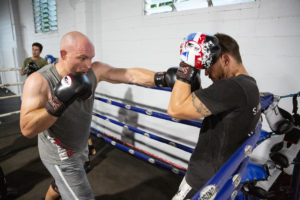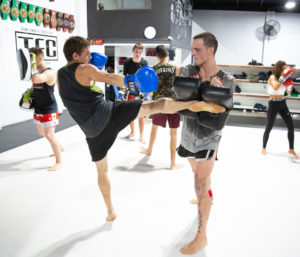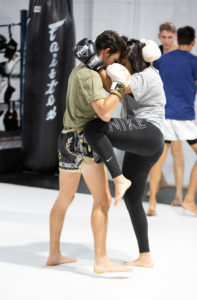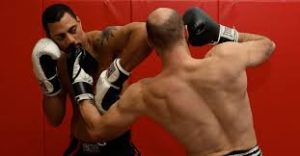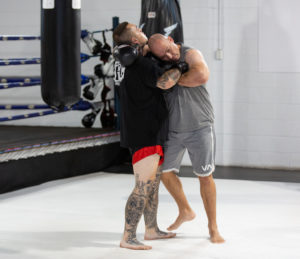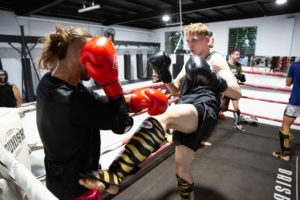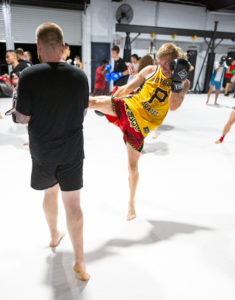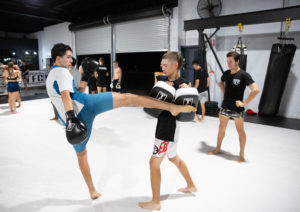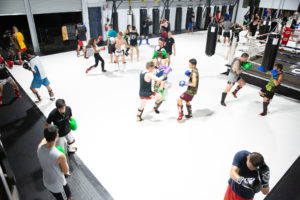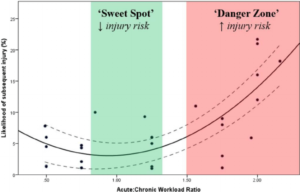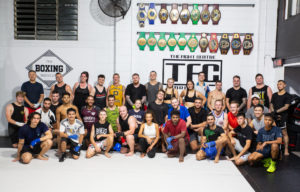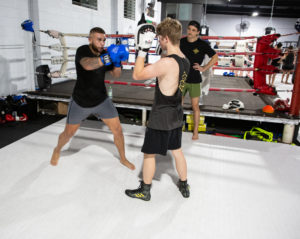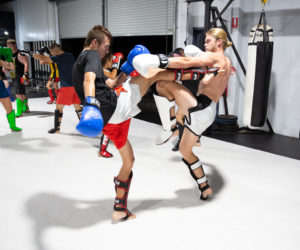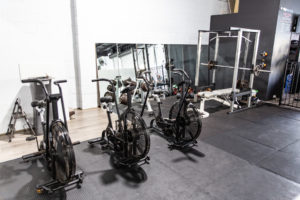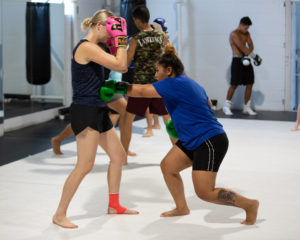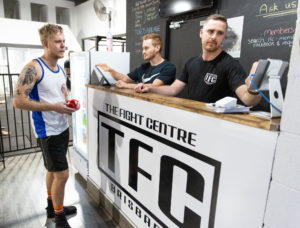Upcoming Events
No event available, please check back again, thank you.
Latest Articles
The Definitive Guide for Beginners Starting Muay Thai
22 January 2020
This is a guide for beginners looking to get involved in the sport of Muay Thai. There are so many facets of training Muay Thai to consider, it can become very confusing in the beginning. If a person was to really take the time to think about all the potential hurdles, starting can seem overwhelming. This leads some people to never begin at all, leaving them to never fulfil their potential.
Unfortunately, this is too often the case. The thought of training Muay Thai in Brisbane and Logan areas can be daunting, and people often double, triple, and quadruple check the details of things that they are procrastinating about. In the case of starting Muay Thai training, it is somewhat justified. This is because training can be expensive and there are many opportunities to waste your time, money, and efforts.
Our guide has been developed in an effort to help those people looking to start their journey into the unknown.
My Name is Ben Johnston, and I have been in the sport for the last 13+years. I’ve fought and won 2 x Muay Thai World Titles and am proud to coach current and future champions. Having started with a Rugby Background, and coming from a family of boxing enthusiasts, Muay Thai was both a traditional and sport-based martial art that has helped guide me in my journey. Its benefits, community and camaraderie are something I hope you can experience too. So without further adieu, check out the Muay Thai Beginners guide I’ve prepared below!
Topics
- What to expect
- What you should learn
- What are the 8 weapons
- Muay Thai as self-defence
- Muay Thai as a sport
- How long do I need to train Muay Thai to get good?
- How do I condition my shins (does a rolling pin work?)
- When can I have my first fight?
- How many hours a week should I train? (how to avoid overtraining)
- What should I look for in a gym?
- How much does a class cost?
- Should I get private lessons?
- What is the etiquette for sparring?
- How fit do I need to be to get started?
- How do I know if I’m progressing?
- Where do I buy my gear for training from?
- Is a mouth guard important?
-
1 What to expect
The fear of the unknown can be overwhelming.
If you are a movie buff and have seen ‘Kickboxer’ starring Jean Claude Van Damme or Ong Bak, you’ll have a sense of excitement or possibly dread regarding the unknown of what to expect when you come to train Muay Thai for the first time. Let me first tell you its very different. At least in our local gym in Logan.
Yes, it is true that some gyms in the past have had an ugly reputation, but these days the negative behaviour in Muay Thai gyms in Logan and Brisbane has mostly disappeared.
Note: The one thing that has always been there and still remains in Muay Thai gyms, is the respect. The Muay Thai Coaches and Muay Thai fighters have put in the time and effort over the years, and deserve to be listened to. This does not mean they should be worshipped, and if they are using their status in the gym to assert any bullying behaviour, it should be a major red flag for you.
In terms of what to expect during Muay Thai training, expect to get SWEATY! Muay Thai can be a great workout where you can burn hundreds, even thousands of calories in a single session!
Expect to be training with others, and not on your own, as it takes two-to-tango, so to speak.
Expect there to be people of all genders, shapes and sizes. Muay Thai is for EVERYONE!
And, expect to feel uncoordinated in the beginning! No one is an expert on their first night, trying to master the art is a never-ending journey.
If you want to read more about what to expect in a Muay Thai gym, visit here!
-
2 What you should learn Muay Thai techniques
Muay Thai is known as the art of the 8 limbs, which means it makes use of 2 hands, 2 feet, 2 knees, and 2 elbows, but more about that later… In the beginning, you will likely be learning the very basics of these weapons, and it will be a very long time before you master them.
The first part of your training will likely consist of you learning how to walk again, literally! In Muay Thai stance and balance is so important that the instructor will likely give you some basic lessons on how wide and deep your feet should be, and how you should move your feet as you navigate your way around the floor/ring.
With stance comes your guard, meaning how you hold your arms in front of you in order to protect your face and body. The Muay Thai stance and guard is a little different to the boxing stance and guard. This is because boxers only defend against punches, but in Muay Thai there are 8 weapons to consider.
Once you have been shown the basic techniques, it is very hard to say what you might learn on your first night. You may be thrown in the deep end and be taught things that are a little complicated for someone just beginning the sport, but don’t stress. You will likely be picking up little bits of technique along the way without even realising it.
Just remember that you don’t have to learn everything in the first day! Muay Thai takes years to master, and the most accomplished fighters never believe they ever truly master it. Each gym and each trainer will place more emphasis on different areas of the training according to what they learned to be the most effective for them, but the only way to cover all bases with your training and be sure you don’t miss anything is to continue to show up every night, and keep an open mind!
-
3 What are the 8 weapons
The 8 muay thai weapons are:
- Punch
- Kick
- Knee
- Elbow
- *and the unofficial weapon – Clinch
Muay Thai Fist Strikes (Punches)
There are many types of punches, but basically they are broken up into three main types. Straight punches, Hooks, and Uppercuts. At our Muay Thai gym at the Fight Centre in Logan, we have also adopted western style boxing to compliment our Muay Thai technique.
These 3 styles of punches give you the option to legally attack anywhere on the body or head of your opponent. Generally speaking, straight punches are used to attack the front of the head and body, hooks are used to attack the side of the head and body, and uppercuts are used to attack your opponent either under the chin or anywhere on the head and body while they are leaning forward.
Muay Thai Kicking
The 4 main types of kicks used are leg kick, body kick, head kick, and push kick (aka “teep”). Leg kicks are powerful and easy to use, as it is a small movement and cannot easily be caught by your opponent’s arms, but they are also easily checked (blocked). Landing body kicks are a great display of dominance and can cause damage to the arms and ribs of your opponent. Damaging the arms and ribs makes it difficult for your opponent to breath and also affects their ability to punch and block. Head kicks are not frequently used, as they are very difficult to land, but when landed clean across an opponent’s head they can be devastating. The Teep is often used as a way of gauging distance and shows finesse and control in the fight.
Muay Thai Knees
Knees in Muay Thai are very effective while clinching, and also when closing distance. Knees are mostly used to attack the body of an opponent, but also can be used to attack the legs and head.
Muay Thai Elbows a fan favourite
Elbows are the weapon that Muay Thai is probably most well-known for utilising. They are a very damaging weapon as they are unpadded in professional bouts, and they can end fights easily due to knock-outs and cut stoppages. Due to the fact that they have a much shorter range, elbows are mostly used when in close proximity to an opponent and rarely used at range.
The clinch is a very effective weapon used in Muay Thai. Westerners (also known as Farlung in Thailand) are known for being worse at utilising the clinch than the Thais are, but this gap is starting to become less, as many westerners are choosing to spend long periods of time in Thailand and therefore learn to clinch properly.
Clinching aka Stand Up Thai Grappling
Clinching is a close-quarter technique used in a fight. The main aim in the clinch is to put yourself in a position to attack your opponent while controlling them. This also helps minimise the risk of them striking you (usually with elbows or knees) and also provides opportunities to sweep your opponent without being swept yourself.
-
4 Muay Thai for self defence
Even though Muay Thai in Thailand is practised as a sport and a way for Thai fighters to earn money, it is also a highly effective form of self-defence. Muay Thai encompasses a large variety of attacks that can be used effectively both in the ring and when defending oneself.
The martial arts effectiveness lies in its simplicity. It does not use many flashy “Hollywood” techniques that you may see in an action film, but instead Thai boxers (aka “nak muay”) practice the same techniques for hours on end every single day. The least effective techniques have been removed and what is left over is the most simple and most damaging techniques to be used in a fight.
Muay Thai training takes almost anything that can be used in a stand-up fight and utilises intensity and repetition to master them, but therein lies it’s pitfall for self defence… Muay Thai does not prepare its practitioner for the fight hitting the ground.
In 1-on-1 situations, Muay Thai is super effective… up until the point where the fight goes to the ground. To make use of their Muay Thai skills, a Muay Thai fighter would try to keep an attacker at a distance so he can’t be tackled to the ground and return to his feet as quickly as possible if that does happen. For learning to defend oneself on the ground, sports like wrestling and Brazilian Jiu Jitsu are highly effective. If in a situation in the street where there is more than one attacker, being on the ground is not ideal as multiple attackers can surround an opponent and attack them while on the ground. This makes escaping by foot very difficult.
-
5 Muay Thai as a sport
Muay Thai is the national sport of Thailand, where it originates from, and is practised in countries all over the world. Muay Thai originated from Muay Boran which was used in unarmed combat by the Siamese soldiers, but it was developed into a ring sport in the 1930s. since then it has undergone numerous changes to enhance the safety of the participants.
There are also other hybrid versions of Muay Thai which have become very popular over the years, such as the K1 and kickboxing varieties.
Read about the difference between Muay Thai and Kickboxing here!
Bouts are scored using a 10 point system, meaning each round the winner is given 10 points, and the loser is given 9, or 8 points depending on how convincingly they were beaten during the round. In a professional Muay Thai bout, traditionally there are 5 x 3-minute rounds with a 2-minute rest between rounds. Now there are some organisations running 3 x 3-minute rounds with varying rest times.
In Australia, there are many variations to the traditional Muay Thai rules. In Thailand, there is no such thing as an amateur and professional bout, all bouts are considered to be professional, even for child participants. Due to the fact that Muay Thai is mostly practised as a hobby in Australia, there are amateur bouts practised with 2 x 3 minutes rounds and 5 x 3-minute rounds. If the rounds are scheduled for 3 minutes, the fight is usually considered a professional bout.
Muay Thai’s popularity in Logan is gaining momentum, and many people from all walks of life are practising the sport. The vast majority of people that practice the sport never compete in an official bout. There is still much to gain from attending a Muay Thai class, even if there is no intention of competing. The fitness, self-defence and confidence benefits are large contributors to Muay Thai’s growing popularity.
-
6 How long does it take to get good at Muay Thai
This is a very tricky question to answer. Everyone learns at a different pace and everybody will be committed differently depending on their goals. There are many different variables which will affect a person’s ability to progress. Some variables will be controlled by the student, and some variables will be external.
The desired outcome from training
Example A: This student is motivated and has a clear goal of becoming a Muay Thai fighter. He shows up to training every day and commits with everything he has in every class. He watches videos on Muay Thai at home, and constantly keep his goals in mind.
Example B: This person shows up to training every day because they want to learn, but put no real intention into their classes. They don’t often think about why they started Muay Thai in the first place, and although they are consistent with their training they simply go through the motions during class.
After 3 months of training: Both students will have progressed significantly but it is highly likely that Example A will have progressed much further than Example B.
Compare Muay Thai training to lifting weights. If one person is lifting weights trying to get stronger, constantly pushing themselves trying to lift heavier, doing research to ensure their nutrition is right and ensuring they get the adequate amount of rest and recover properly for the next session, their strength will increase at a much faster rate than a person who is showing up and just lifting the same weight for the same number of reps every time they train.
Frequency of training
People often go to Thailand and spend a month training and come back far better at the sport than people who would do two months of training at home in Australia. This is largely due to the frequency of training that a person does when in Thailand. Generally speaking, people might train two hours a session, and two times per day when on a training camp in Thailand, whereas when in Brisbane, they might attend 2 to 3 sessions a week, each lasting an hour.
If the person who went to Thailand was to spend the same amount of time with the same frequency at a gym in Australia (2 hours twice per day), they may not get as good compared to training in Thailand (due to the quality of training there being at such a high level), but they could get very close.
The reason why this is so hard to do whilst at home in western society, is that it’s very difficult to find someone who can cater to that level of training, and when we are at home we tend to get distracted by many other responsibilities.
Visit this article to find out more about training in Thailand
Another thing to consider is also the frequency of the reps in training. as a trainer, often I see people waste time in the middle of class. They may do a combination that has been shown to them by their instructor, and then stand around and talk about something not relevant to the training, or just make general conversation or crack a few jokes in between practising the combination. Although a few words exchanged may take only a few seconds to exchange, when added together, those seconds quickly turn into minutes, and over the course of a week or a month, those minutes can turn into hours wasted.
If a person limited the time talking and procrastinating and just did the work consistently, they would get much more done in that one-hour session. Choose your training partners wisely, as you can be held back by someone who isn’t trying to improve themselves or taking it as seriously as you are.
Ultimately we are trying to find that “sweet spot”, where we are still enjoying our training and experience the renowned camaraderie of a Muay Thai gym, but also are ensuring we are getting the work done and striving to be better each time.
Natural Ability
This is most definitely a factor in a students progression, as much as we wish that it isn’t. In a fair world, whoever works the hardest should be rewarded the most, but unfortunately, the world doesn’t work that way.
I have seen many students work hard week after week, only to have someone else come in and be better than them on their first night at training. Although this is a sad reality, this doesn’t mean that a person who isn’t born with natural talent cannot become a great fighter, it just means it will take more time, dedication, and commitment in order to get there.
The most important factor in becoming a better fighter or getting good at Muay Thai is constantly reminding yourself of what you are doing and why you are doing it. If you don’t understand the value in hard work, it is very hard to force yourself to do it. We have all had those moments where we come home from work, sit down on the couch just to relax for a few minutes, and then find it hard to pull ourselves up to go training, but thinking about the end results and how those workouts will benefit us, can give us that burst of motivation and discipline required to go and get the job done!
-
7 How do I condition my shins
Watching a Muay Thai fight and seeing the intense clashing of shins can leave a spectator wondering how it is possible for a person to take such a blow to the shins and show no sign of pain. The answer to this problem is largely due to the conditioning of the shins during training prior to the bout.
Like most parts of the body, the shins will adapt when put under repetitive and controlled stress. The constant impact to the shins during training from activities such as kicking the bag, kicking pads and sparring, will over time begin to not only make the pain receptors in the shins less sensitive but also start to calcify the bone in the shin.
Doing things such as hitting your shin with something hard like a beer bottle or a rolling pin will not harden the shins, it actually causes damage! When looking to condition shins, the trick is to use pressure spread out over a larger surface area, rather than focused to a small point.
If you are training frequently and using all of the usual training methods (sparring, pads, bag-work), your shins should naturally become conditioned over the course of the first few months and be more than hard enough for you to step in the ring for a fight.
The big reason that fighters don’t usually show pain from the clashing of shins is the same reason why soldiers in war can continue to fight after becoming wounded during a battle. Adrenaline.
Adrenaline is the body’s way of protecting itself during a fight or flight response. The adrenaline dulls sensations of pain to allow our body to continue to function in a situation where we are required to fight or flee even if we are hurt. This explains why a fighter can take lots of damage during the fight without even showing the slightest signs of pain (although some good old fashioned mental toughness is also needed). The real pain sets in after the fight is over, this is when recovering correctly becomes so important…
-
8 When can I have my first fight
The time it takes for a student to become ready to have their first fight will be different for every individual. The trainer takes many things into account when it comes to progressing a student into becoming a fighter, and many different trainers have different methods, all of which can be effective in their own way.
The most common methods are:
- Slowly take the time to build up a fighter making sure to take care of them and protect them every step of the way
- “Sink or Swim”. To throw a fighter in the deep end and see how they perform. A quick way of testing a fighter out to see if they have courage and skill early.
- Somewhere in between, protecting a fighter but also not stopping them from meeting challenges along the way.
At TFC we use method Number 3. It is our belief that everyone learns at a different pace, and also gains confidence in different ways. In saying that, we do have a basic structure we follow for MOST fighters.
Our TFC Muay Thai students must all complete a minimum number of classes each month to even be considered as a potential fighter. Once they are consistently showing up for consecutive months back to back, we then invite them to enter the fighters class, where they must continue to show commitment. As we start to look for suitable competitions and suitable opponents, we will start taking them to spar events with other clubs, getting them used to the feeling of nerves and seeing different techniques that they might not be used to in our gym.
Once they show they are at a decent skill level and are handling these tests well, we will book them for a fight with an opponent who has also had zero or at most a small handful of fights. This process varies greatly, with some people taking only a few months to get to this level, and others taking years to get to the required level.
All of the topics mentioned previously in our “how long does it take” section, also apply to fighters. Other things that will speed up or slow down the process:
Does the student represent the gym well?
If a student has a bad attitude, doesn’t follow the gym rules, is a bad role model for other students in the gym, or displays aggressive behaviour in or outside the gym, it is highly unlikely they will be joining the TFC fight team.
Does the student show discipline?
If the student that wishes to fight is partying every weekend in preparation for a fight, drinking and smoking or doing other activities that will affect their ability to train or perform, they will not be fighting until that activity stops. Countless hours are invested by trainers which are not covered by gym fees. To see a fighter show up on the day of the fight at less than their full capabilities because they could not say “no” to drinking with their friends for a few weeks is very disappointing.
A student’s diet also plays a large factor in the quest to fighting. If a student wants to fight, they must be at a suitable weight for their body size. If they are not getting down to the right weight and carrying excess fat, causing them to be in a higher weight class, they will not get the opportunity to fight. (It is worth noting that students body and genetic structure is taken into account, as we realise some people struggle to lose weight more than others. If a student is taking every measure possible but still not losing the weight, exceptions can be made.)
To learn more about a Muay Thai fighter’s diet, visit here.
Our advice to aspiring fighters:
We realise that it can be very frustrating wanting to fight but being at the mercy of your coach booking you for a fight. The best thing you can do is continuously train hard, and politely remind your coach that you are interested in fighting and see if there is anything extra you can do to speed up the process.
One thing you must remember is that your coach should have the same goal as you, and this is to WIN. They have seen and guided the process many times before, and have a better idea of what someone who is or isn’t ready to fight looks like than you do. So…
Trust the process!
-
9 How many hours a week should I train aka How to avoid injury
There are various schools of thought when it comes to the amount of training a person should be doing. It is very easy to become confused while trying to find a place that lies between ‘not doing enough’ and overtraining. With MMA careers like Cain Velasquez’s being cut short supposedly due to overtraining, more and more fighters are beginning to take note of ways to avoid injury and overtraining.
You may not be a fighter but you rely on your body functioning properly to earn an income… Or, maybe you just don’t want to get injured so you can continue to do the things you enjoy, and live an active lifestyle… Whatever the reason you don’t want to get injured, here are some guidelines to help keep you off the sidelines.
SIMPLE ANSWER – INCREASE YOUR WEEKLY TRAINING LOAD BY NO MORE THAN 10% EACH WEEK IN ORDER TO AVOID INJURY.
If you are interested to know why read below…
First, we must understand what ACUTE and CHRONIC workload are.
Here is a very simplified breakdown of the two:ACUTE WORKLOAD
The amount of training done in a week.CHRONIC WORKLOAD
The weekly average training is done over 4 week periodA good way to track this is by using a heart rate monitor and tracking calories burned in a session. If you don’t have access to a heart rate monitor, a way to track/measure your weekly training is to give it a value by multiplying the minutes by the intensity.
EXAMPLE
Monday – 60 min x 8/10 intensity = 60 x 8 = 480
Tuesday – 90 min x 6/10 intensity = 90 x 6 = 540
Wednesday – rest
Thursday – 45 min x 9/10 intensity = 45 x 9 = 405
Friday – 60 mins x 5/10 intensity = 60 x 3 = 300480 + 540 + 405 + 300 = 1725
Acute workload = 1725Week 4 – 1725
Week 3 – 1500
Week 2 – 1600
Week 1 – 1700
Week 4 + week 3 + week 2 + week 1
1725 + 1500 + 1600 + 1700 = 6525
6525 / 4 = 1631.25
Chronic workload = 1631.25Now that we understand what chronic workload and acute workload are, we can figure out the ACUTE: CHRONIC ratio by dividing the ACUTE load by the CHRONIC load.
ACUTE: CHRONIC
1725 : 1631 = 1.06ACUTE: CHRONIC WORKLOAD RATIO = 1.06
For a more in-depth and complete breakdown, click here!
Great! We know our Acute: Chronic Workload Ratio… So what?
Finding this number is important because if we keep it below 1.3 it significantly decreases our likelihood of getting injured.
How do we do this? By progressively increasing training to get to the fitness level we need, rather than doing it all at once. This means if we have a Chronic workload of 1000 but we need to be doing an acute workload of 2500 in order to be prepared for a fight, we need to increase to this over a number of weeks.
If we were to do this in one week, this is what happens to our acute: chronic workload ratio:
2500:1000
Acute : Chronic ratio = 2.5.
Much higher than our 1.3 we are aiming to stay below to avoid injury.A safe way to stay under 1.3 is to increase the training load by 10% each week. This will put your Acute: Chronic workload ratio at around 1.1. This also leaves you a little room for error if you have a particularly hard session that you didn’t plan on having, or training runs a little bit longer occasionally.
This also means returning from injuries needs to be planned out properly, as taking multiple weeks from training back to back will seriously affect your chronic workload. Returning to a full training schedule could leave you at serious risk of injury.
Whether you are a fighter or a beginner, I strongly suggest you plan ahead when it comes to increasing your training. Deciding on what your workload needs to be is a very difficult question to answer, and will vary depending on what your goals are, but if you plan ahead and keep your acute: chronic workload ratio in mind, you are able to significantly reduce your likelihood of getting an injury along the way.
-
10 What should I look for in a gym
Everyone is different. How do you know if a gym is going to be right for you? The truth is, it’s very hard to know whether a gym is going to be the right fit for you without actually attending. Most gyms have a variety of services and facilities that you can take advantage of, but we need to first establish the things that are most important to YOU before making the decision on what you want from your Muay Thai gym.
Here is an article we wrote that goes through 4 things you should look for in a Muay Thai gym!
We will cut straight to the most important aspect that a gym can offer. More important than price, more important than facilities, possibly in some ways even more important than the actual technical advice given. You must ask yourself,
“Do I enjoy coming here?”
If the answer is “no”, you may want to consider another gym, or giving your gym membership money to charity instead, as it is unlikely you will be getting value for your money.
Muay Thai skills are not mastered in a matter of weeks or months. It takes YEARS to truly grasp the concept of most Muay Thai techniques. If you do not enjoy attending a gym, can you see yourself having the discipline to get past every excuse you may have when it comes time to head to training?
If you can’t, then it’s time to start looking at the other factors that come in to play when choosing the right gym for you.
- Price – is it too expensive for your budget?
- Location – is it an inconvenience to get to and likely to become an issue?
- Experience of trainers – have they had real ring experience, can they control the safety of the students, are they capable of getting you ready for a fight if that is your goal?
- Schedule flexibility – do they offer a range of classes at times suitable for you?
- Equipment and facilities – is there protective flooring allowing you to practice Muay Thai safely?
All of these questions should be considered, and it is up to you to decide the importance of each one to you as an individual. A gym should also be considerate of the fact that you are likely having some mixed feeling and emotions, possibly feeling a little anxious, about walking into a Muay Thai gym for the first time. There should be some assistance offered to you as a beginner rather than just throwing you in a class with the more advanced students and telling you to sink or swim. You shouldn’t expect a private lesson on your first night (unless of course, you paid for one) but you should expect to be made to feel safe and welcome.
Another thing worth considering is the credentials of the gym trainer.
Do the trainers have fight experience of their own? Have they taken many fighters to the ring before you? A good trainer isn’t always the perfect fighter, in fact, many trainers never “made it” as a fighter themselves… but a trainer’s history and experience as a fighter is a good indicator of whether they have the necessary knowledge to pass to their students.
I have known numerous trainers that have never stepped foot in the ring, but have acquired skills through years of training and have produced some top-quality talent. Also, I have known trainers that DO possess the skills, but don’t produce good fighters… but more often than not, rich history of fight experience and a successful stable of fighters is a good indicator of a trainer’s ability to pass on knowledge.
To find out the best way to get your Muay Thai training started, read this!
-
11 How much does a class cost
The cost of Muay Thai classes differs greatly everywhere you look. For beginners, it may become confusing seeing one gym charge more than double the rate of another gym nearby. What is the difference between the two gyms? And, why is one so much more expensive than the other?
The reality is, not all gyms are equal. As we spoke about previously, you need to establish what is important to you when it comes to your Muay Thai training. There should be a list of areas which you are taking into consideration. Here are just a few of the things you may consider;
- Quality of trainers
- Facilities
- Location
- Schedule flexibility
- Variety of classes
- Gym culture
- Gym’s ability to cater to your personal goals
- Safety of members
- Welcoming atmosphere
- Gym history and prestige
- Cost of membership/classes
Unfortunately, as more of the areas you deem to be important are fulfilled, that usually means the cost of training increases.
We go into greater detail of the cost of Muay Thai training in this article.
Majority of gyms will have a trial class or an option to pay a casual rate. If you are still unsure as to whether a gym is worth the money they are asking (keep I mind that cheaper doesn’t always mean better value for money), it may be worth trying a class before you sign up!
You can contact us if you are in/visiting the Brisbane area and wish to jump in one of our Muay Thai classes!
-
12 Should I get Private lessons
Students trying to fast-track their Muay Thai training progress often seek out one-on-one time with a trainer. Spending time with an experienced Muay Thai coach will undoubtedly uncover some areas that you need to work on. A good coach can make minor adjustments to your technique that can increase your speed and power greatly, and also share some wisdom that may be specific to what you’re thinking and feeling. But, it is not the be-all and end-all when it comes to improving…
Read this for reasons why you could use a Muay Thai personal trainer!
There are many valid reasons why you would opt to pay the extra money for private Muay Thai lessons. Maybe you struggle with certain techniques during classes and can’t figure out how to fix them on your own. Maybe you need someone to hold you accountable as you tend to find reasons to skip training at the last second. Maybe you work long hours or late-shifts and struggle to make the classes. Your reasons are most likely valid, but could you get to where you want to be without spending the extra money?
Learning techniques is fast-tracked when your trainer is spending one-on-one time with you. There is no debating that. The problem is that people expect a trainer to magically fix their technical flaws in a single lesson. Any problem that you have been having for a while is likely going to take more than a few sessions to unlearn. Repetition and consistency are the keys when it comes to forming good habits. So if you are only doing one lesson with a trainer per week, This lack of consistency will likely not yield significant results. However, if you were to combine this private session with regular group classes each week, where you continue to practice the techniques the trainer has shown you, this is a great recipe for success. Or, if you have the money, have multiple private Muay Thai lessons every week with your personal trainer!
If you know that you tend to be lazy when it comes to training and choose to use a personal trainer to help you stay on track and hold you accountable. To you, I say, “WELL DONE!”. Well done for accepting that you may need to outsource some motivation, and well done for having the awareness that you can’t go at it alone… but, the trainer cannot go at it alone either! If you show up to private lessons and expect your trainer to do the work, this will be a painful process for everyone involved. YOUR TRAINER CANNOT DO THE WORK FOR YOU. The trainer is there to guide and help you, not punch, kick, and knee for you. If you really want to get better you must put the effort in during the sessions. If you don’t, your progress will be slow, and don’t be surprised if your trainer is the one who is starting to make excuses to skip sessions…
Schedule flexibility is by far the most valid reason to seek a personal trainer. If you cannot attend classes but are 100% committed, your options are limited. My advice would be to get a heavy bag at home and practice between lessons if possible. Again, consistency and repetition are key.
It really comes down to how much you are willing to invest in getting better at a faster pace. I personally think that most problems can be solved through attending classes consistently and constantly putting yourself in the deep end with your training. But, it does take a longer amount of time to do this without the help of a trainer. Just keep in mind that it will cost more. This is a decision that comes down to the individual desires and needs of the student, and how much value they place on the speed of their progression!
-
13 What is the etiquette for sparring
Sparring is an extremely important part of training for any Muay Thai students looking to fight one day. It’s where you can take what you learned during all the other areas of your training, and put them into practice during what can be best described as a “simulated fight”. What a student might find is that some of the techniques that they learned in training don’t always work out the same way with a real person. Often a partner holding a pad, or a bag that stays relatively still, just can’t quite replicate the dimensions and movement of a real person, so adjustments have to be made. Without sparring and trying techniques on a real person a student may feel lost when it comes time to fight or compete in the ring.
The real question is, how does someone punch and kick another person, but go about it in a ‘nice’ way?
A major factor in how well you can spar while also remaining a good training partner is your intention. If your intention is to try and hurt the other person with your strikes, your partner will often be able to sense this and may not want to spar with you in the future. Whereas, if your intention is simply to try and land your shots and practise your techniques on a partner, they will feel much more comfortable with you. This will also make you improve at a much faster rate than someone who comes to sparring trying to brawl.
Safety
There are also other factors which can help you ‘spar nicely’. Be sure to wear 16oz gloves (maybe if you are female or quite small you can wear 14oz) and be sure to wear leather or synthetic leather shin pads with good shin protection. The foam-sock style shin pads provide very little cushioning for your shins if you kick someone’s knee or elbow (not that uncommon), and on a more serious note, they provide very little protection to your partner from your shins! You should also take care to make sure your gloves are not splitting at the seams or starting to break down where fragments of material can damage your partner’s eyes or face.
Hygiene
Sweat, smelly gloves, body odour, hair, toe nails, finger nails (if clinching with no gloves on), breath.
These are all major players in a partner’s experience while sparring you. Keep your nails short, stash your deodorant in your bag, if you are particularly hairy and/or sweaty keep a shirt on, cut your nails short, stock breath mints in the glove compartment of your car. And, most importantly, don’t leave sweaty gear in your bag between sessions. Gyms are a breeding ground for staph infections and hot/humid environments such as inside a gym bag left in a car make matters even worse. Hang your gear out at home, wash your wraps, and don’t wear the same clothes 2 nights in a row without washing them first.
Keep it playful
Sparring can be very daunting for some people. You will become more used to it as you attend frequently, just try not to forget that others may not be at the same level as you. If they are going too hard, it’s likely because they are tense out of fear/nervousness. When this happens, just keep your attitude light-hearted and offer to work technically with them to allow them to loosen up rather than trying to hurt them back.
At TFC we have designated sparring sessions, and give our students the option to spar or not. This means that most people that attend our sparring sessions are fully aware and consenting to the fact that they will get punched and kicked, so don’t feel the need to apologise every time you land a shot on them… but if you do accidentally land something a little harder than you intended, it may be a good idea to acknowledge it and apologize before continuing.
-
14 How fit do I need to be to get started
A statement I frequently hear from beginners looking to start training Muay Thai is “but I’m unfit” or “I need to get my fitness up before I start training”. Many people have worries about their bodies not being able to keep up with the Muay Thai sessions, or are concerned that they may be judged by others in the class for not having the same fitness as the top students. While this thought is a common occurrence, there are a few reasons why it can be an illogical reason to not begin training in Muay Thai.
Overtraining: Doing too much too quickly
We recently spoke about the risks of overtraining in Muay Thai and how it can cause injury, so in some ways, people are right to be concerned about doing too much too quickly. The key is to start slowly to avoid becoming injured. If you have SOME activity in your lifestyle, then you needn’t be too concerned about easing into a Muay Thai training routine a few times a week, but if you live a very sedentary lifestyle, then you may want to start by just showing up and doing what you can at a lower intensity for the first few weeks.
There is no need to break any records in your first few lessons. So at first, during fitness elements of training, you may choose to just slow it down and work on refining your skills so that you aren’t overexerting yourself. Once you have gained some consistency in your training you can then increase the intensity of your sessions, and then increase the frequency (number of sessions per week). This is a great way to avoid injury without avoiding starting at all. After all, while you are gaining fitness you may as well be learning a few skills at the same time!
It’s true, there will always be some risk of injury when exercising, but the other risks associated with not exercising need to be considered as well. Our state of mind dramatically improves when we; have a consistent routine, exercise, learn new skills, and experience progress in areas of our life. Is it worth risking our mental health to avoid injuring our body? If we manage the variables (starting at a low intensity and easing into the training over a few weeks), the risk is low enough that we are likely to avoid any injuries anyway.
Will others judge me if I’m unfit?
Take a second and try to recall a time in your memory where you saw someone trying to learn a new skill. Did you think to yourself “wow, what an idiot! Would hate to be that person!” If you did think that, you should probably consider doing some self-reflecting on why your mind takes that line of thinking.
For most of us at Muay Thai training, we are too busy with trying to improve ourselves to really notice what others are doing. We are too busy thinking about our own technique or trying to grind our way through a round to take real notice of other peoples’ technique or fitness levels or judge others for their lack of experience.
As with most things in our lives, it’s our own thoughts and perceived limitations that get in the way of us getting what we want. We find reasons to procrastinate and put off tasks, and usually, the tasks we procrastinate about are also the most important. So, If you are considering starting Muay Thai for any of the various reasons (confidence, wanting to fight, weight loss, etc.), it may be worth asking yourself “what is the immediate action I can take that will get me closer to my goals?”
If the answer is “start training”… what are you waiting for?
-
15 How do I know if I'm progressing
Just like anything, you will have moments where your improvements are obvious and other times when you question if you have improved at all. This is the natural process of learning. Initially, you’ll be relying on your trainer’s feedback. If they’re correcting you less often, you’re likely making fewer mistakes. Many people often find that their progress is the most evident when in a sparring situation, noticing how they’re adapting to challenges more comfortably than before.
Even though we shouldn’t compare ourselves to others and we should only try to be better than our former selves, it becomes apparent that you’re improving when the guys that used to ‘beat you up’ can no longer do so… BUT! This usually only happens if you are training very consistently and they are lazy.
You will unlikely see your improvements by comparing yourself to the guy that is training five times every week, when you are only training once per week. Every gym has members that show up very inconsistently. So, if you are desperate to figure out how your progress is going, take note of who you rarely see, and spar with them in class every so often.
Muay Thai is a martial art that takes time to develop proficiency in, don’t let that hold you back from getting started though! The sooner you get started, the sooner you’ll progress.
-
16 Where do I buy my gear for training from
At TFC we have a shop where you can buy all the necessary equipment for Muay Thai. If, however, you aren’t in the Logan area we suggest only purchasing high-quality equipment from reputable sources. Although it might seem cost-effective buying cheaper gear, you get what you pay for. Make no mistake about it, Muay Thai is a dangerous martial art, do your best to protect your body by investing in high-quality gear that will not only last but protect your body adequately. Need a tip on what brands to look out for? Some brand that we suggest are Twins, Yokkao, Punch, Punish, Venum, and Raja.
-
17 Is a mouth guard important
Are your teeth important? With strikes coming from all kinds of angles from all sorts of weapons, if there is any martial art that needs a mouth guard, it’s Muay Thai. Many students prefer to only wear mouth guards during sparring practice. However, to get the most out of your training cardiovascularly try training throughout the session with your mouth guard in. Many gyms in Thailand have made it mandatory for their fighters to train with their mouth guards in at all times for this exact reason.
Wearing a mouthguard creates a smaller opening in the mouth, limiting the airflow to the lungs during training. This creates the need for our body to adapt to do the same amount of work with less oxygen, ultimately improving our gas-tank. It also simulates the conditions that a person would have during a fight, as wearing a mouthguard during a bout is mandatory, so getting used to wearing one is a great idea if you want to fight one day!
-
18 conclusion
The reality is, no matter how much reading or research you do before hand to best prepare yourself before taking up Muay Thai, the better option would be to walk into a gym and have your first class. Real-life practice will always be the better option.
Reading articles and watching videos are a great way to supplement your training and expand your knowledge of Muay Thai, but without practising the techniques for real, it is almost pointless.
The hardest part is starting. After that things seem to figure themselves out along the way. My suggestion: Google the gyms in your area right now, and book a class with one to get the ball rolling (even if you’re reading this at 3am)!
Looking for a Muay Thai gym in the South Brisbane, or Logan area? Contact us at TFC!


